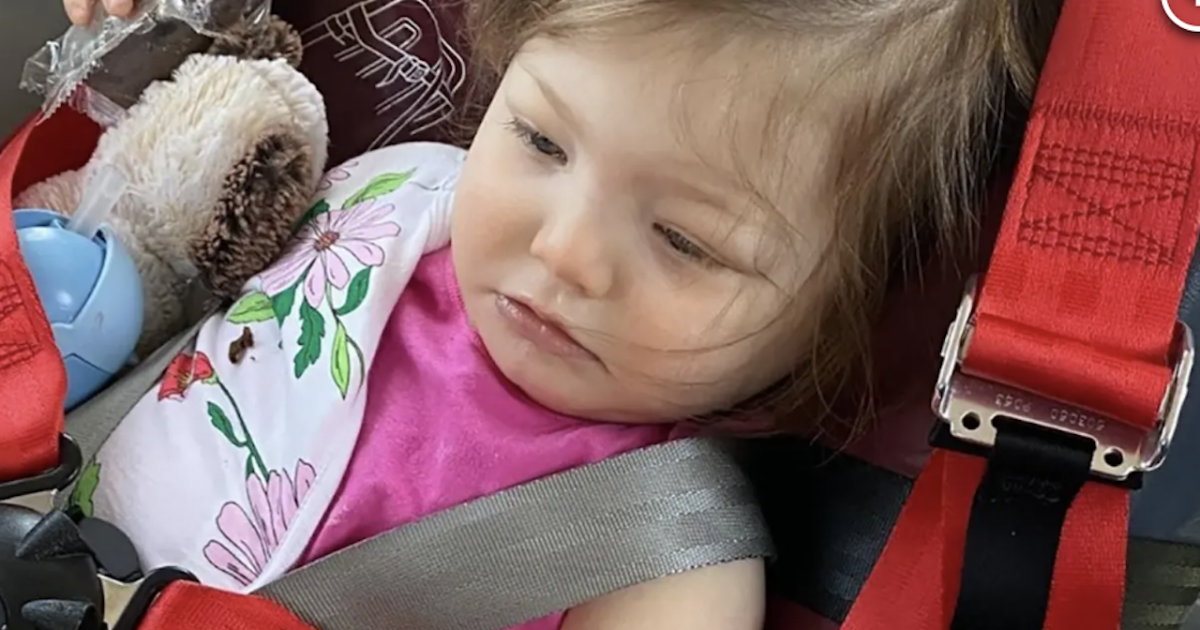Toddler's Swollen Faces Leads to Leukemia Diagnosis
- An Australian toddler’s puffy face eventually led to a diagnosis of leukemia. Doctors initially believed it to be a virus she picked up from daycare.
- Leukemia is the most common cancer diagnosed in children, with most cases being a specific type of the disease called acute lymphocytic leukemia (ALL).
- Always push for a correct and conclusive diagnosis if you’re not getting answers.
"It was just huge and her eyes were really swollen, which I thought was quite weird," Maddison says. "We thought, 'What on earth is going on with her face?' but she seemed to be happy, she was eating, everything was normal other than that."
Toddler’s Cancer Journey & Understanding Leukemia
Read More"It sounds crazy but I just knew in my gut that it was cancer."Leukemia is the most common cancer in children and teens, according to the American Cancer Society. It accounts for almost 1 out of 3 pediatric cancers. Most of these cancers are a type of leukemia called acute lymphocytic leukemia (ALL), which starts in the early forms of white blood cells called lymphocytes. ALLs make up about 3 out of 4 cases of childhood leukemia. Acute myeloid leukemias (AML) make up most of the remaining cases, and chronic leukemias are rare in children. AMLs begin in the myeloid cells that normally form white blood cells (other than lymphocytes), red blood cells, or platelets.
"When we talk about leukemia, that means one of the types of white blood cells is growing out of proportion to the others and in general, that's the definition of cancer," Dr. Nina Shah, a hematologist at the University of California San Francisco, told SurvivorNet in a previous conversation about how blood cancers begin.
"One cell got really selfish and decided that it needed to take up all the resources of everybody else and in doing so, took up space and energy from the rest of the body," she explained. "So in this case, some of the white blood cells will start to grow out of proportion, and that's what's known as a leukemia. Now, if it's a kind of leukemia that grows really, really quickly, we call it an acute leukemia. And if it's a kind of leukemia that grows over several years, we call it a chronic leukemia."
Pediatric ALL is most commonly diagnosed in early childhood, between the ages of 2 and 5, while AML tends to be more spread out. It is slightly more common in the first 2 years of life and during teenage years.
Dr. Nina Shah explains the different categories of leukemia
Pushing for a Correct Diagnosis
After toddler Arielle’s face began to swell, her parents knew something was wrong due to her “puffy face.” Thankfully, her mother Maddison listened to her intuition, and she “pushed for doctors to run blood and urine tests,” the Post reports. "I said, 'She still has a puffy face and it's really getting worse'. You know, I was really starting to get a bit worried now," says Maddison.
It is so critical to listen to your gut when it comes to matters of health for you or your loved ones. Keep pushing for answers if you’re unable to get a conclusive, correct diagnosis. The toddler’s mom says, "It sounds crazy but I just knew in my gut that it was cancer."
In an earlier interview, Dr. Zuri Murrell of Cedars-Sinai advises patients to lead each doctor’s appointment with a plan and to “be pushy,” if needed. He says you are your own best advocate.
Be Pushy, Be Your Own Advocate… Don't Settle
Learn more about SurvivorNet's rigorous medical review process.


